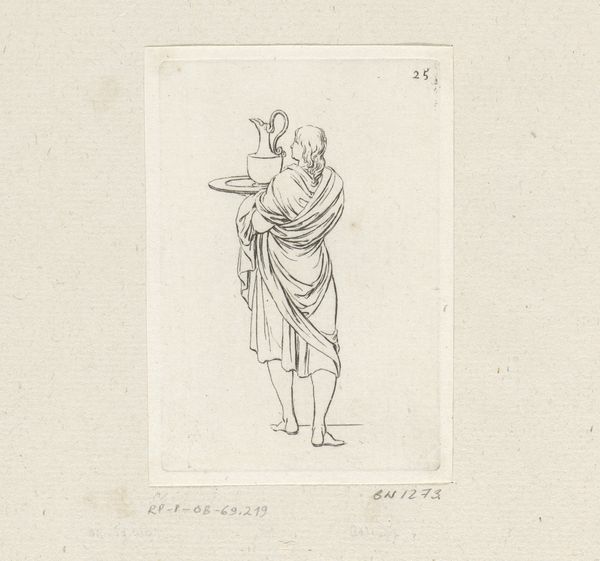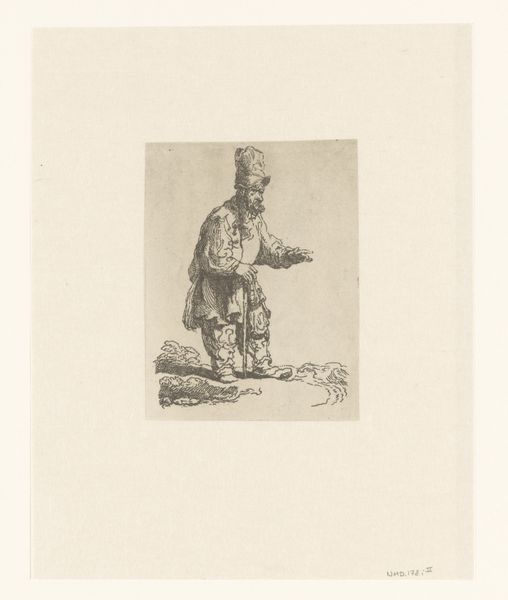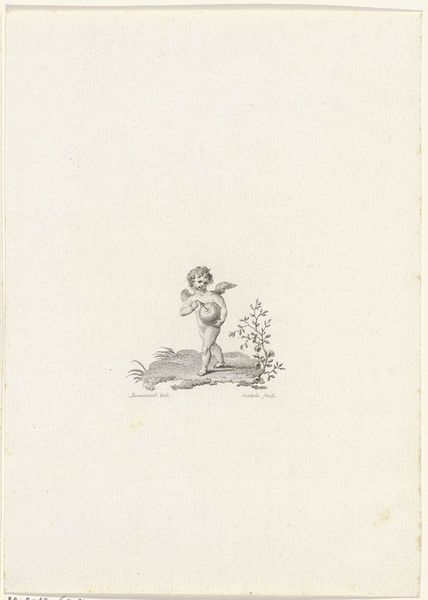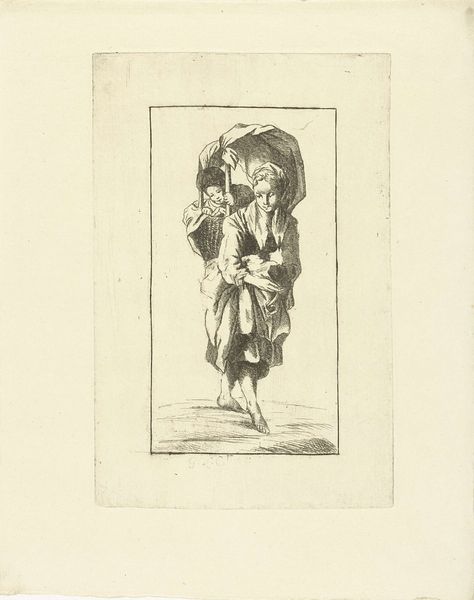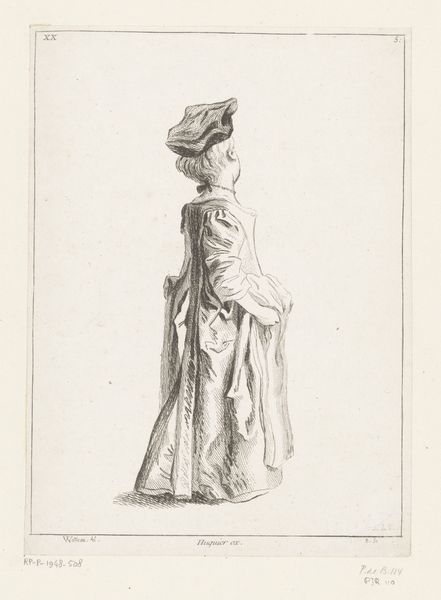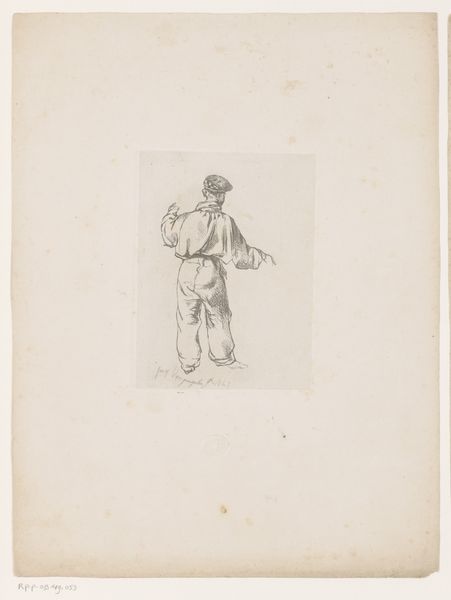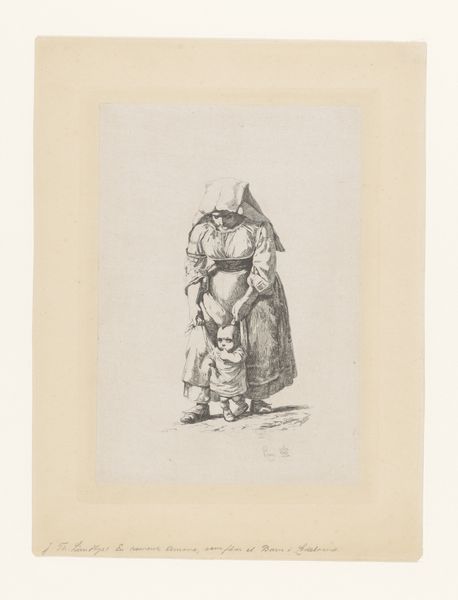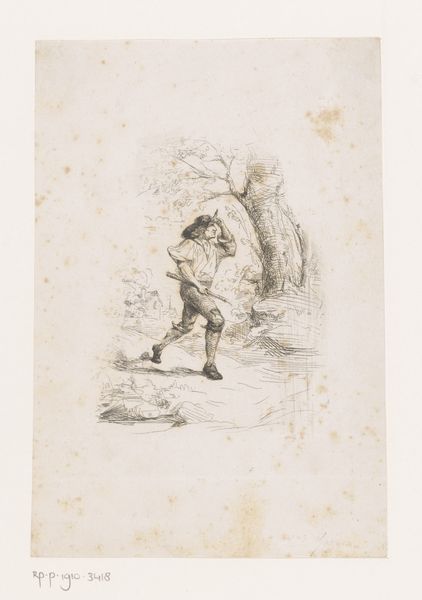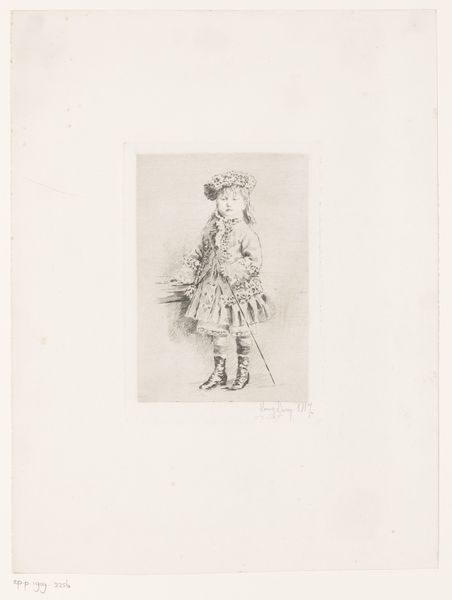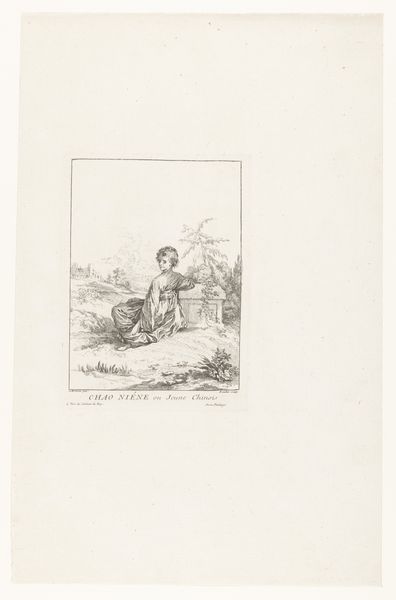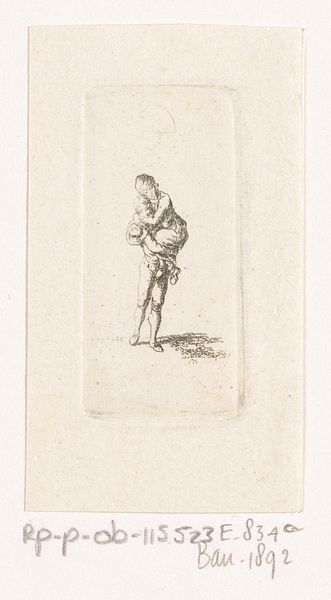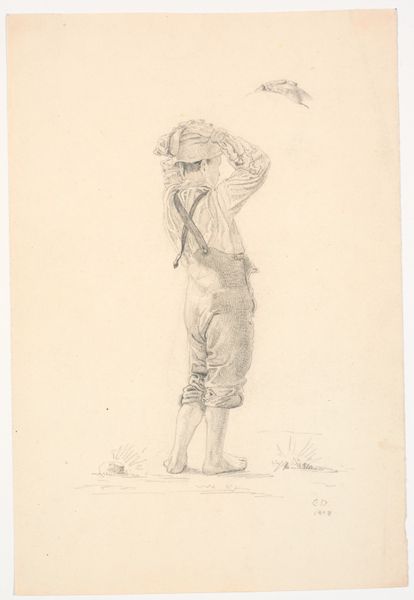
drawing, paper, ink, pencil
#
portrait
#
drawing
#
light pencil work
#
neoclassicism
#
pencil sketch
#
old engraving style
#
landscape
#
figuration
#
paper
#
personal sketchbook
#
ink
#
idea generation sketch
#
ink drawing experimentation
#
romanticism
#
pen-ink sketch
#
pencil
#
sketchbook drawing
#
pencil work
#
sketchbook art
Dimensions: height 98 mm, width 78 mm
Copyright: Rijks Museum: Open Domain
Curator: Here we have "Wandelende vrouw met mand en schopje," or "Woman Walking with Basket and Shovel," a drawing made with pen, ink, and pencil, sometime between 1795 and 1813, by Joannes Pieter Visser Bender. It's part of the collection at the Rijksmuseum. Editor: My initial impression is of lightness. It seems to capture a brief, perhaps fleeting, moment of daily life. It almost feels as if the woman might move at any moment. Curator: Precisely. It evokes questions about labor and social roles, especially considering the limited representation of working-class women in art of that era. What commentary, if any, is Bender making about her place in society, her material conditions? Editor: I'm immediately drawn to the basket she carries, presumably filled, and the small shovel—tools of her trade. The rendering emphasizes their ordinariness. This is not romanticized peasant labor; there’s a sense of function over form in the way they are depicted, focusing on her actions within this world. Curator: Agreed. And consider the historical context. We’re nearing the end of the 18th century, with the French Revolution having just concluded and major political upheaval across Europe. How might this figure represent a shift—or perhaps a lack thereof—in the lived realities of women and laborers during this transformative time? Is she merely an allegorical figure, or a reflection of genuine social change? Editor: That reading is pertinent. It provokes pondering what shifts in material realities could have taken place for working women and laborers to make this portrait more relevant to that era. We could contemplate if Bender intentionally aimed for it, or if it serves merely as a study or form experimentation with these new media? The simplicity makes me want to look deeper into the working process Bender adopted and how he may have consumed popular or working class cultures, like images in books or prints, and the purpose behind it. Curator: It truly invites a multifaceted interpretation. Editor: Indeed. An image rendered through unassuming materiality unveils compelling complexities concerning both form and sociohistorical conditions.
Comments
No comments
Be the first to comment and join the conversation on the ultimate creative platform.
